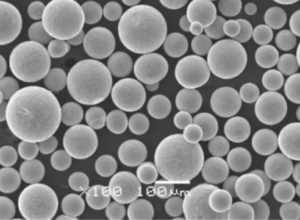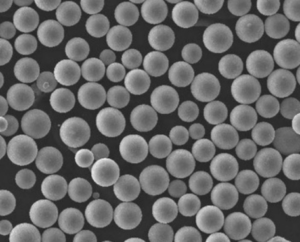Genel Bakış Gaz Atomizer Ekipmanları
Gaz atomizör ekipmanı, havacılık, otomotiv, medikal ve elektronik dahil olmak üzere çeşitli endüstrilerde gerekli olan metal tozlarının üretiminde çok önemli bir rol oynar. Bu cihazlar, erimiş metali ince parçacıklara ayırmak için yüksek basınçlı gaz kullanır ve mükemmel akışkanlığa sahip yüksek saflıkta, tek tip toz elde edilir. Bu işlem, malzeme özelliklerinde hassasiyet ve tutarlılık gerektiren uygulamalar için hayati önem taşır.
Gaz atomizasyonu, üretilen metal tozlarının kontrollü partikül boyutu dağılımı, yüksek saflık ve küresel morfoloji gibi istenen özelliklere sahip olmasını sağlar. Bu özellikler gaz atomize tozları eklemeli üretim (3D baskı), metal enjeksiyon kalıplama (MIM) ve diğer gelişmiş üretim teknikleri için ideal hale getirir.
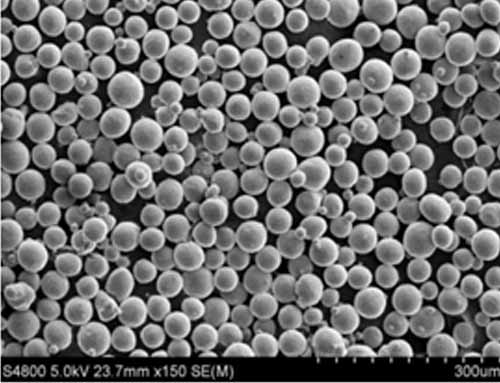
Gaz Atomizer Ekipmanlarının Türleri, Bileşimi, Özellikleri ve Karakteristikleri
Gaz Atomizer Ekipman Türleri
| Tip | Açıklama |
|---|---|
| İnert Gaz Atomizörleri | Atomizasyon işlemi sırasında metallerin oksitlenmesini önlemek için argon veya nitrojen gibi inert gazlar kullanın. |
| Reaktif Gaz Atomizörleri | Belirli alaşımlar üretmek veya toz özelliklerini değiştirmek için hidrojen gibi reaktif gazları kullanın. |
| Su Atomizörleri | Su ile daha az reaktif olan metaller için uygun olan gaz yerine yüksek basınçlı su jetleri kullanın. |
| Vakumlu Atomizörler | Kirlenmeyi önlemek için vakumda çalışır, yüksek saflıkta toz üretimi için idealdir. |
Gaz Atomizer Ekipmanının Bileşimi
| Bileşen | Malzeme | Fonksiyon |
|---|---|---|
| Atomize Nozul | Tungsten Karbür, Çelik | Erimiş metali parçalamak için gaz akışını yönlendirir. |
| Gaz Besleme Sistemi | Paslanmaz Çelik, Alaşımlar | Gaz akışını sağlar ve düzenler. |
| Eritme Fırını | Grafit, Seramik Astarlar | Atomizasyondan önce metal hammaddeyi eritir. |
| Toz Toplama Sistemi | Paslanmaz Çelik, Polimerler | Metal tozunu toplar ve depolar. |
Gaz Atomizer Ekipmanlarının Özellikleri ve Karakteristikleri
| Mülkiyet | Açıklama |
|---|---|
| Partikül Boyutu Dağılımı | Düzgün ve kontrollü, tipik olarak 10 ila 150 mikron arasında değişir. |
| Toz Morfolojisi | Gelişmiş akışkanlık ve paketleme yoğunluğu için pürüzsüz yüzeylere sahip küresel partiküller. |
| Saflık Seviyeleri | İnert atmosferde işleme sayesinde minimum kontaminasyon ile yüksek saflık. |
| Üretim Kapasitesi | Küçük laboratuvar ölçekli birimlerden büyük endüstriyel sistemlere kadar çeşitlilik gösterir. |
| Verimlilik | Metal hammaddesini toz formuna dönüştürmede yüksek verimlilik. |
Arızaları önlemek için ~0,3-0,5 mm'lik minimum duvar kalınlığı Gaz Atomizer Ekipmanları
Gaz Atomize Tozların Uygulamaları
| Endüstri | Uygulama |
|---|---|
| Havacılık ve Uzay | Hafif, yüksek mukavemetli bileşenlerin üretimi. |
| Otomotiv | Karmaşık geometrilere sahip parçaların üretimi. |
| Tıbbi | Biyouyumlu implantların ve cerrahi aletlerin oluşturulması. |
| Elektronik | İletken macunların ve bileşenlerin imalatı. |
| Katmanlı Üretim (3D Baskı) | Prototiplerin ve son kullanım parçalarının üretimi. |
| Metal Enjeksiyon Kalıplama (MIM) | Karmaşık metal parçaların hassasiyetle şekillendirilmesi. |
Gaz Atomizer Ekipmanlarının Özellikleri, Boyutları, Sınıfları ve Standartları
Gaz Atomizer Ekipmanının Özellikleri
| Şartname | Detaylar |
|---|---|
| Gaz Basıncı | Modele bağlı olarak 10 ila 50 bar arasında değişir. |
| Nozul Çapı | Tipik olarak 0,2 ila 2 mm arasındadır. |
| Erime Kapasitesi | Parti başına 1 kg'dan birkaç tona kadar. |
| Toz Verimi | Toz üretiminde 'e varan verimlilik. |
Metal Tozlarının Boyutları ve Kaliteleri
| Sınıf | Boyut Aralığı (mikron) | Tipik Bileşim |
|---|---|---|
| Güzel | 10 – 30 | Yüksek saflıkta metaller ve alaşımlar. |
| Orta | 30 – 60 | Genel amaçlı metal tozları. |
| Kaba | 60 – 150 | Yapısal ve ağır hizmet parçaları. |
Gaz Atomize Tozlar için Standartlar
| Standart | Organizasyon | Açıklama |
|---|---|---|
| ASTM B243 | ASTM Uluslararası | Toz metalurjisinin standart terminolojisi. |
| ISO 4497 | Uluslararası Standardizasyon Örgütü | Eleme yoluyla partikül boyutu dağılımının belirlenmesi. |
| MPIF Standart 35 | Metal Tozu Endüstrileri Federasyonu | Metal tozları için malzeme standartları. |

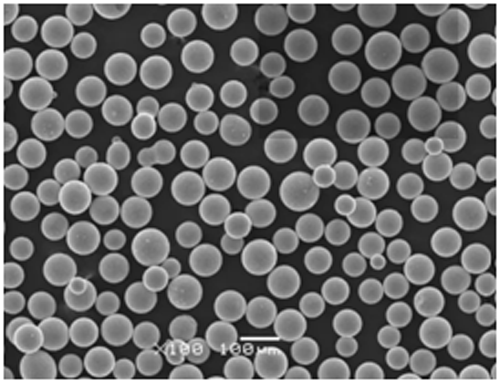
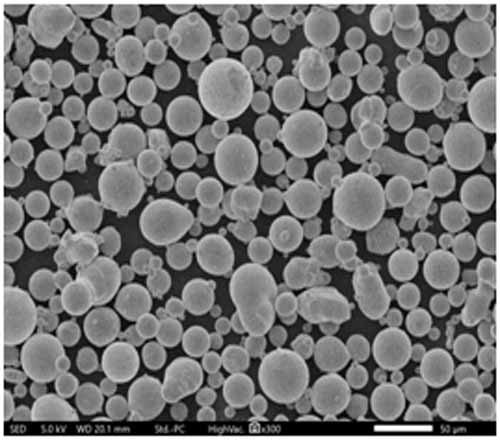
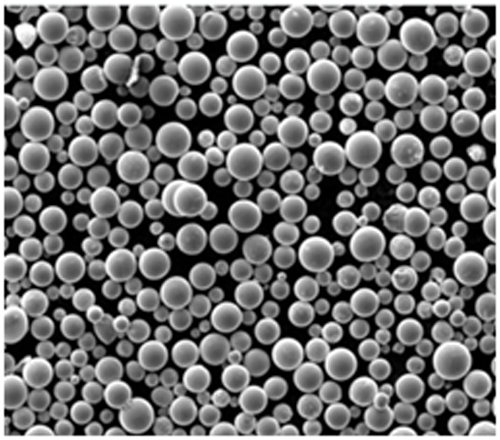
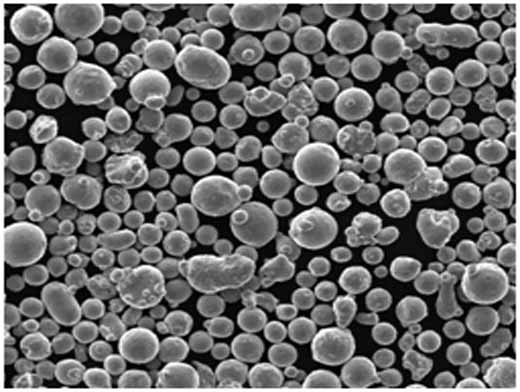
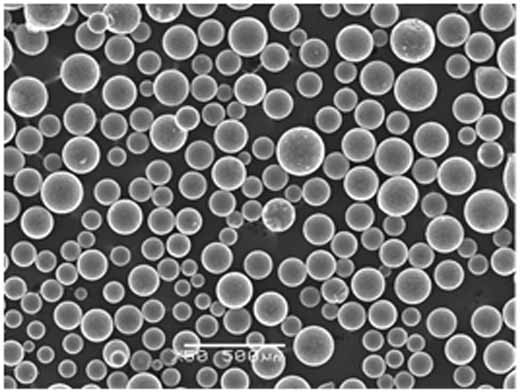
Gaz Atomizer Ekipman Tedarikçileri ve Fiyatlandırma Detayları
Gaz Atomizer Ekipman Tedarikçileri
| Tedarikçi | Konum | Uzmanlık |
|---|---|---|
| Höganäs AB | İsveç | Yüksek kaliteli metal tozları ve atomize ekipmanları. |
| Sandvik AB | İsveç | Çeşitli metaller için gelişmiş atomizasyon teknolojisi. |
| Praxair Yüzey Teknolojileri | ABD | Endüstriyel gaz çözümleri ve atomizer ekipmanları. |
| AP&C (GE Katkı Maddesi) | Kanada | Havacılık ve uzay sınıfı metal tozları ve atomize sistemleri. |
Fiyatlandırma Detayları
| Ekipman Türü | Fiyat Aralığı |
|---|---|
| Laboratuvar Ölçekli Atomizörler | $50,000 – $200,000 USD |
| Endüstriyel Ölçekli Atomizörler | 500.000 $ – 5.000.000 ABD DOLARI |
| Özel Üretim Sistemler | Spesifikasyonlara göre değişir |
Gaz Atomizer Ekipmanının Artıları ve Eksileri
Gaz Atomizer Ekipmanının Avantajları
| Avantaj | Açıklama |
|---|---|
| Yüksek Saflık | Minimum kontaminasyon ile metal tozları üretir. |
| Düzgün Parçacık Boyutu | Uygulamalarda tutarlı kalite ve performans sağlar. |
| Çok Yönlülük | Çok çeşitli metal ve alaşımları işleyebilir. |
| Ölçeklenebilirlik | Hem küçük ölçekli hem de büyük ölçekli üretim için uygundur. |
Gaz Atomizer Ekipmanının Sınırlamaları
| Sınırlama | Açıklama |
|---|---|
| Yüksek Başlangıç Maliyeti | Ekipman kurulumu için önemli yatırım gereklidir. |
| Karmaşık Operasyon | Yetenekli operatörler ve sıkı süreç kontrolü gerektirir. |
| Bakım | Optimum performansı sağlamak için düzenli bakım gerekir. |
| Enerji Tüketimi | Atomizasyon işlemi sırasında yüksek enerji kullanımı. |
Spesifik Metal Tozu Modelleri
- Inconel 625
- Kompozisyon: Nikel, Krom, Molibden
- Mülkler: Yüksek korozyon direnci, mükemmel yorulma ve termal yorulma mukavemeti, oksidasyona dayanıklı.
- Uygulamalar: Havacılık, denizcilik, kimyasal işleme.
- Titanyum Alaşımı (Ti-6Al-4V)
- Kompozisyon: Titanyum, Alüminyum, Vanadyum
- Mülkler: Yüksek mukavemet/ağırlık oranı, mükemmel korozyon direnci, biyouyumlu.
- Uygulamalar: Tıbbi implantlar, havacılık ve uzay bileşenleri, otomotiv parçaları.
- 316L Paslanmaz Çelik
- Kompozisyon: Demir, Krom, Nikel, Molibden
- Mülkler: Mükemmel korozyon direnci, iyi mekanik özellikler.
- Uygulamalar: Tıbbi cihazlar, gıda işleme ekipmanları, kimyasal konteynerler.
- Alüminyum Alaşım (AlSi10Mg)
- Kompozisyon: Alüminyum, Silikon, Magnezyum
- Mülkler: Yüksek mukavemetli, hafif, iyi termal özellikler.
- Uygulamalar: Otomotiv, havacılık, yapısal bileşenler.
- Kobalt-Krom (CoCr)
- Kompozisyon: Kobalt, Krom, Molibden
- Mülkler: Yüksek aşınma direnci, biyouyumluluk, mükemmel mekanik özellikler.
- Uygulamalar: Tıbbi implantlar, dişçilik cihazları, havacılık ve uzay.
- Bakır Alaşımı (CuNi2SiCr)
- Kompozisyon: Bakır, Nikel, Silikon, Krom
- Mülkler: Yüksek ısı ve elektrik iletkenliği, iyi mekanik özellikler.
- Uygulamalar: Elektrikli bileşenler, ısı eşanjörleri, havacılık.
- Maraging Çelik
- Kompozisyon: Demir, Nikel, Kobalt, Molibden, Titanyum
- Mülkler: Ultra yüksek mukavemet, iyi tokluk, ısıl işlem kolaylığı.
- Uygulamalar: Takım, havacılık, yüksek performanslı mühendislik.
- Hastelloy X
- Kompozisyon: Nikel, Krom, Molibden, Demir
- Mülkler: Mükemmel oksidasyon direnci, yüksek sıcaklık dayanımı.
- Uygulamalar: Havacılık ve uzay, gaz türbinleri, endüstriyel fırın uygulamaları.
- Nikel Alaşım 718
- Kompozisyon: Nikel, Krom, Demir, Niyobyum, Molibden
- Mülkler: Yüksek gerilme, akma ve sürünme-
kopma özellikleri.
- Uygulamalar: Jet motorları, yüksek gerilimli bileşenler, petrol ve gaz.
- Takım Çeliği (H13)
- Kompozisyon: Demir, Krom, Molibden, Vanadyum
- Mülkler: Yüksek tokluk, iyi termal yorulma direnci.
- Uygulamalar: Sıcak iş uygulamaları için kalıplar, kalıplar, kalıplar.
Karşılaştırmalı Analiz Gaz Atomizer Ekipmanları
| Özellik | İnert Gaz Atomizörleri | Reaktif Gaz Atomizörleri | Su Atomizörleri | Vakumlu Atomizörler |
|---|---|---|---|---|
| Toz Saflığı | Yüksek | Orta ila yüksek | Orta düzeyde | Çok yüksek |
| Parçacık Morfolojisi | Küresel | Küresel | Düzensiz | Küresel |
| Maliyet | Orta ila yüksek | Yüksek | Düşük ila orta | Çok yüksek |
| Uygun Metaller | Geniş ürün yelpazesi | Spesifik alaşımlar | Daha az reaktif metaller | Yüksek saflıkta metaller |
| Oksidasyon Önleme | Mükemmel | İyi | Tedavi sonrası gerektirir | Mükemmel |
Her Türün Avantaj ve Dezavantajları
| Tip | Avantajlar | Dezavantajlar |
|---|---|---|
| İnert Gaz Atomizörleri | Yüksek saflık, geniş uygulanabilirlik | Daha yüksek işletme maliyeti, inert gaz beslemesi gerektirir |
| Reaktif Gaz Atomizörleri | Atomizasyon sırasında alaşımlamaya izin verir | Daha yüksek karmaşıklık, özel gaz kullanımı gerekli |
| Su Atomizörleri | Daha düşük maliyet, daha basit kurulum | Düzensiz partiküller üretir, kontaminasyon riski |
| Vakumlu Atomizörler | En yüksek saflık, oksidasyon ve kontaminasyonu önler | Çok yüksek maliyet, karmaşık bakım |
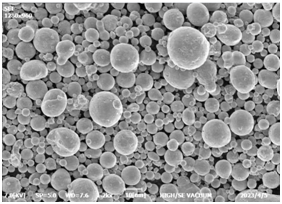
SSS
| Soru | Cevap |
|---|---|
| Gaz atomizasyonu nedir? | Gaz atomizasyonu, erimiş metalin yüksek basınçlı bir gaz akışı ile ince damlacıklar halinde parçalanarak metal tozları oluşturduğu bir işlemdir. |
| Atomizasyonda neden inert gazlar kullanılır? | Argon gibi inert gazlar metal tozlarının oksidasyonunu ve kirlenmesini önleyerek yüksek saflık ve kalite sağlar. |
| Gaz atomizörleri her tür metali işleyebilir mi? | Çoğu gaz atomizörü çok çeşitli metalleri ve alaşımları işleyebilir, ancak reaktif veya yüksek erime noktalı metaller için özel kurulumlar gerekebilir. |
| Hangi endüstriler gaz atomize tozlardan yararlanır? | Havacılık, otomotiv, tıp, elektronik ve katmanlı üretim endüstrileri gaz atomize tozlardan önemli ölçüde faydalanmaktadır. |
| Partikül boyutu metal tozlarının uygulanmasını nasıl etkiler? | Daha küçük, tek tip partiküller 3D baskı gibi hassas uygulamalar için tercih edilirken, daha büyük partiküller geleneksel süreçlerde kullanılabilir. |
| Gaz atomizasyonunda çevresel hususlar nelerdir? | Gaz atomizasyonu, özellikle metallerle reaksiyona girmeyen inert gazlar kullanıldığında, diğer yöntemlere kıyasla tipik olarak daha düşük çevresel etkiye sahiptir. |
| Üretim sırasında metal tozlarının kalitesi nasıl sağlanır? | Kalite, kontrollü atmosferler, hassas gaz akışı düzenlemesi ve partikül boyutu ve bileşimi için sıkı üretim sonrası testlerle sağlanır. |
| Gaz atomizasyonu ile su atomizasyonu arasındaki fark nedir? | Gaz atomizasyonu daha ince, küresel tozlar için yüksek basınçlı gaz kullanırken, su atomizasyonu daha düzensiz şekiller üreten su jetleri kullanır. |
| Gaz atomizasyon teknolojisinde yeni gelişmeler var mı? | Evet, gelişmeler arasında gelişmiş nozul tasarımları, daha iyi gaz akışı kontrolü ve gelişmiş hassasiyet için dijital izleme sistemleriyle entegrasyon yer alıyor. |
| İhtiyaçlarım için doğru gaz atomizörünü nasıl seçebilirim? | Bir gaz atomizörü seçerken metal türü, gerekli saflık, partikül boyutu dağılımı, üretim kapasitesi ve bütçe gibi faktörleri göz önünde bulundurun. |
